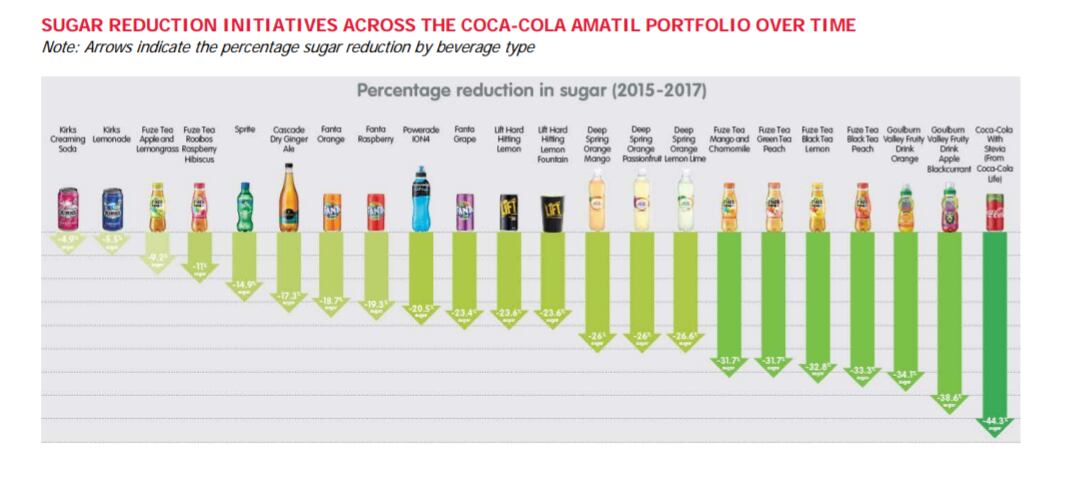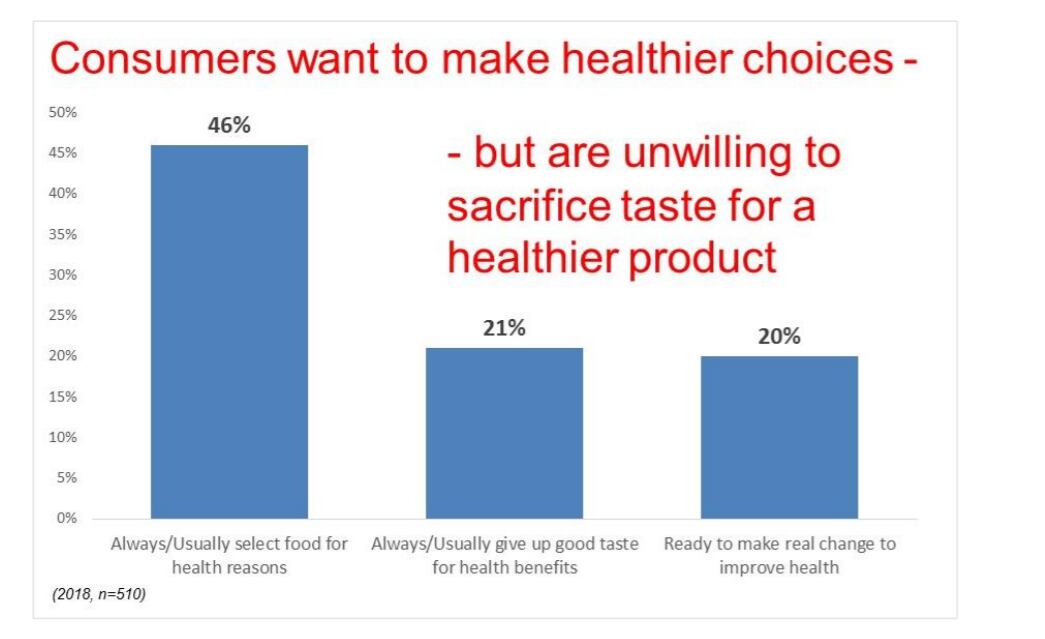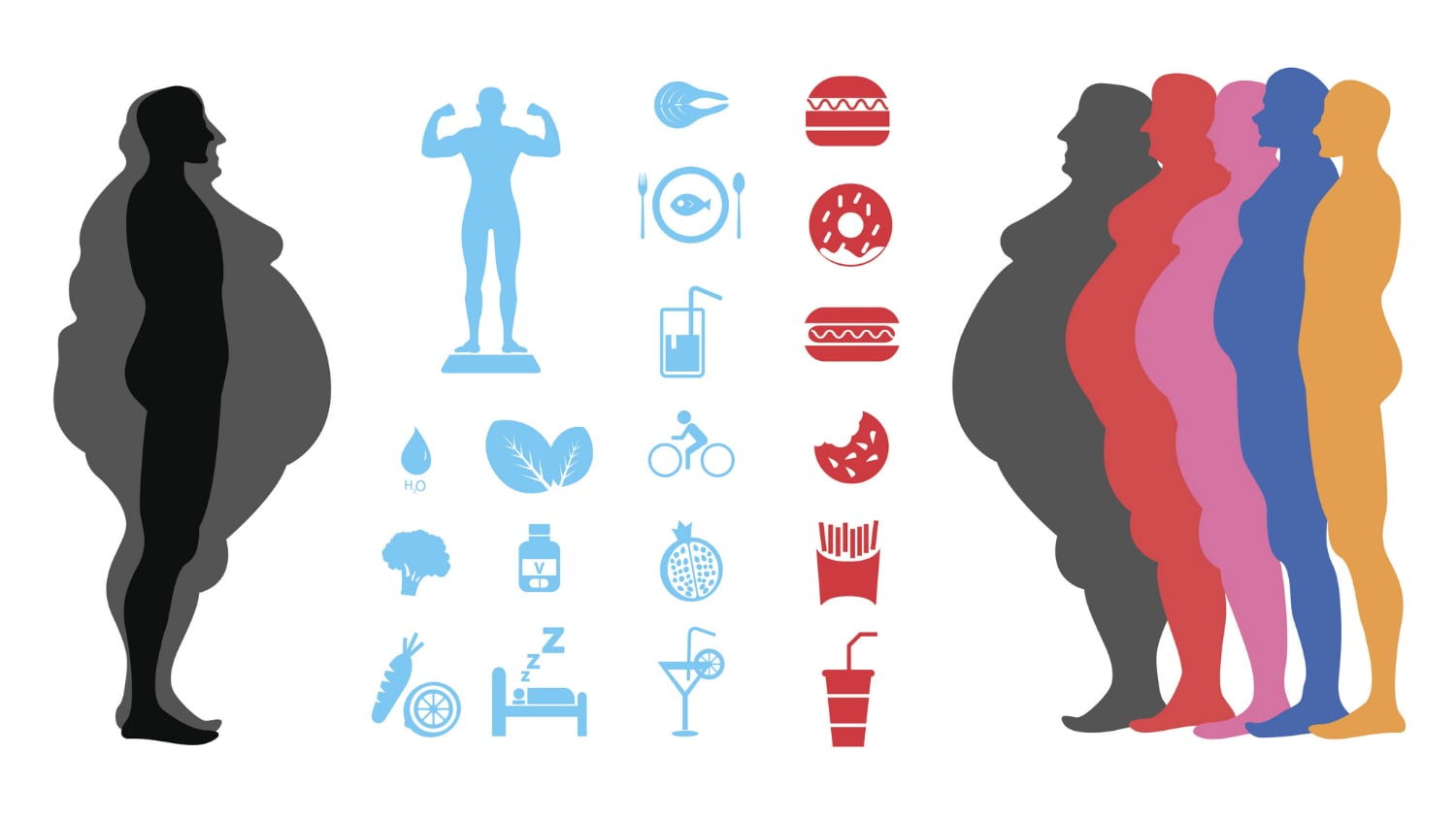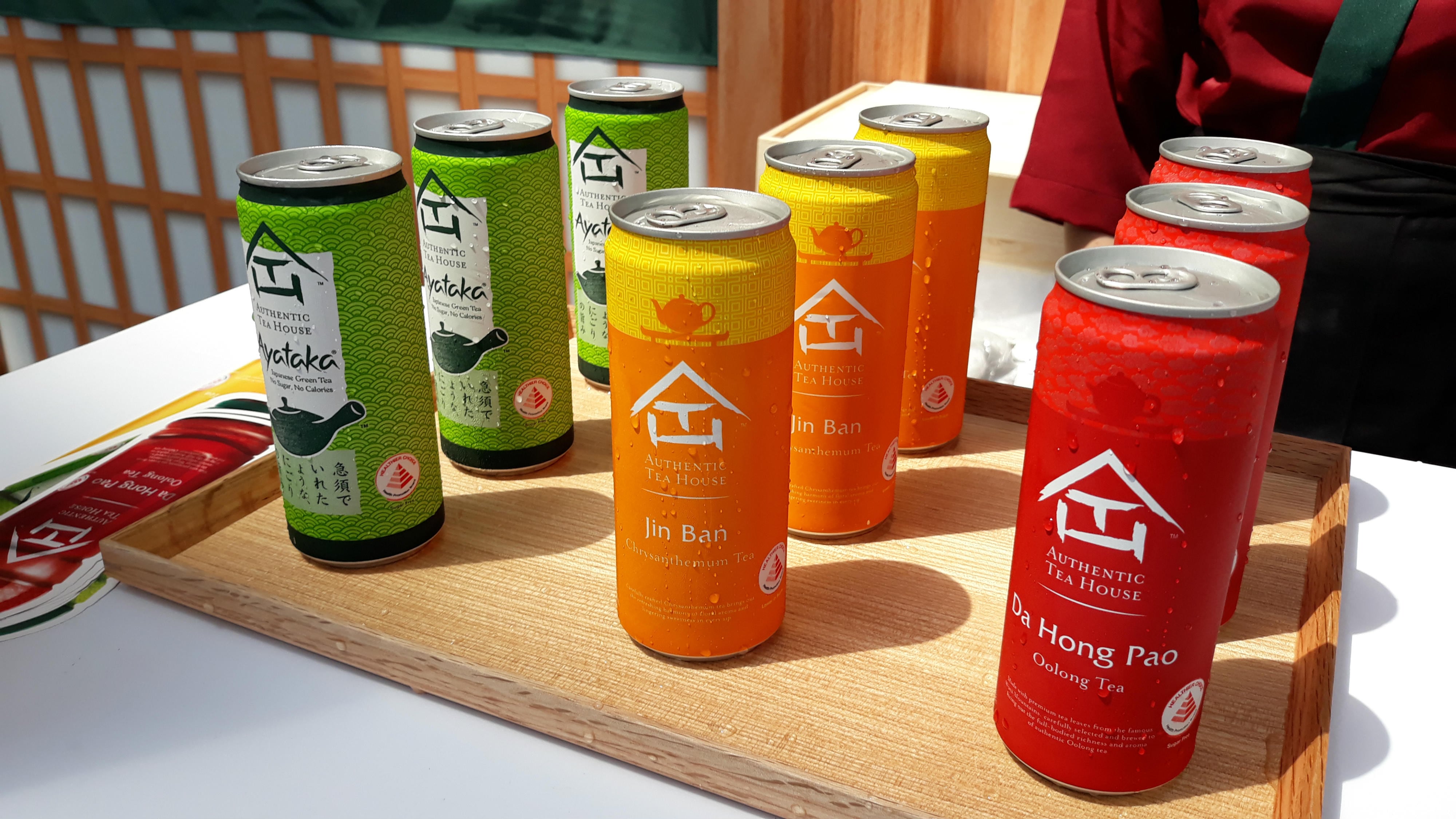Over the past several months, an Australian Senate Committee has been receiving evidence on the obesity crisis and is currently drafting its report.
It has received submissions from almost 200 experts, health professionals, campaign groups, trade bodies and food and beverage firms.
In addition to assessing the rates, causes and economic costs of obesity, it is also assessing existing policies and “the role of the food industry in contributing to poor diets and childhood obesity in Australia.”
Inevitably, this raised industry concerns that punitive taxation measures could be on the cards, fears that would been compounded by the views contained in several submissions to the committee.
The Council of Presidents of Medical Colleges, for example, drew the committee’s attention to the recently imposed sugar tax in the UK, adding: “The available evidence tells us that to reduce the burden of disease caused by obesity, initiatives must include those that protect, enable, inform and support. They must traverse the breadth of social, environmental, regulatory and medical interventions.”
Meanwhile, The Centre of Research Excellence in the Early Prevention of Obesity in Childhood advocated using "bold measures such as a tax on sugar-sweetened beverages", adding that increasing the price by 20 per cent would reduce consumption.
The Global Obesity Centre went further, arguing that the food and beverage industry should not even have a seat at the table when discussing policy initiatives.
“The food industry should only be included post policy formulation,” its statement claimed. “Whilst the food industry may be interested in the promotion of public health, they have an unavoidable conflict of interest as their primary responsibility is to their shareholders and to the profitability of their business.
While the current Australian administration has pledged not to impose a sugar tax, it’s clear there are mounting calls for concerted regulatory action to be taken – and individual states are already making their own moves. Earlier this month, Queensland’s health minister said he wanted to remove ‘junk’ food from hospital vending machines and canteens.
So, set against this backdrop, how should the food and beverage industry respond, and is it doing enough to play its part in tackling the problem?
Three major firms – Coca-Cola Amatil, Fonterra and Nestlé – were among those which submitted documents to the inquiry.
Here’s what they had to say...
1) Coca-Cola Amatil
The beverage giant submitted a bumper 55 page document to the committee, which acknowledged that obesity was a major social challenge in Australia, and that “we know we must play our part to address the issues and effectively contribute to positive change.”
It highlighted how in recent years it had worked closely with Coca-Cola Australia to introduce smaller pack sizes, ensure all ingredients and calories are clearly labelled, reduce sugar content and adhere to voluntary bans on marketing to children.
“In June 2018, we were one of the inaugural signatories to the Australian Beverages Council’s voluntary industry pledge to reduce average sugar per 100ml by 20 per cent across our portfolio of sales by 2025,” it added.
And in a move designed to ward off the threat of a sugar tax, it added there had been a material shift away from sugar sweetened beverages over time, “which suggests the full suite of activities across the whole community to raise awareness about the role of sugar sweetened beverages in diets has had an effect.
“The Australian Bureau of Statistics data has shown a consistent trend away from added sugar intake in Australia over the last 20 years. This includes a six per cent drop in adult consumption, and a 23 per cent drop for children.
“Separate market research about consumer purchasing patterns has found that health has also become a significant consideration for consumers as they make decisions in relation to non-alcoholic beverages. This long-term reduction in sugar consumption from beverages, suggests measures underway across the total community and general consumer trends are already doing the work that proponents of a beverage-based sugar tax say would be achieved,” it added.
The company also added that 61 of the beverages in its Australian portfolio were low- or no-kilojoule products, and all of Coca-Cola’s core brands were available in low- or no-kilojoule varieties. From the existing portfolio, 22 products were reformulated between 2015 and 2017, it stated.

The firm went on to add that a sugar tax would merely lead to higher consumer prices, which would affect the cost of living and of manufacturing in Australia.
“While there is no doubt too much sugar is not good for anyone, the evidence for a beverage-based sugar tax is far from conclusive when it comes to reducing obesity rates. Reducing obesity rates is complex and, as such, addressing obesity requires a multifaceted approach. There is no simple solution and results take time,” it concluded.
2) Fonterra
Fonterra, meanwhile, advocated for a four-pronged approach to improve the nation’s health.
It argued that a tri-partisan approach from public health bodies, industry and consumers was required to ensure that future policies made it easier for Australians’ to choose healthy foods in the context of a balanced diet; enabled increased consumption of core food groups in line with the Australian Dietary Guidelines (ADG); Educated consumers about selecting appropriate portion sizes to moderate consumption; and promoted regular physical activity and addresses sedentary behaviours.
While some people associate dairy consumption with an increased incidence of overweight, obesity and chronic disease, the firm argued there was now significant scientific evidence stating otherwise.
Instead, it claimed that under-consumption of all core foods and beverages, including dairy, was a significant problem for most of the Australian population.
Indeed, the Australian Bureau of Statistics (ABS) 201 -2012 Australian Health Survey showed that the dairy food group was the second most under-consumed food group, after vegetables, with 90 per cent of Australians not consuming their recommended servings of dairy each day.
The result is that more than 50 per cent of Australians aged two years and over are not meeting their daily calcium requirements.
“If Australians increased their intake of dairy foods to the recommended levels as per the ADG, research has shown at least $2 billion could be saved from the annual healthcare budget (Doidge et al., 2012),” the submission stated.
“Despite the strong evidence supporting the recommendations, the ADG have not been appropriately implemented. The high consumption of discretionary foods over the five core food groups may in part be a consequence of the lack of awareness and implementation of the ADG.”
It also suggested that the evidence around dairy consumption weight loss and body composition had evolved since the ADG were last set in 2013.
“The recent systematic review and meta-analysis by Stonehouse et al (2016) of RCTs include a search of five global databases of scientific journals to investigate the effects of consuming dairy food or supplements during energy restriction on body weight and composition in 18-50 year olds. The studies showed that consuming dairy food or supplements as part of an energy-restricted diet resulted in ~1.5 kg greater loss in fat mass compared to those consuming a diet low in dairy,” it stated.
The review also found that participants who consumed more dairy also managed to retain 75 per cent more lean mass compared to those consuming low dairy diets.
Fonterra concluded its submission by stressing its desire to work with the government and also pledged that it will provide the Health Star Rating for all its branded products on websites by June 2019
3) Nestlé
For its part, Nestlé placed reformulation at the heart of its submission and focused on the efforts it had made to reduce salt and sugar levels, while also boosting quantities of fibre and micronutrients.
It argued that a gradual approach to reducing salt, sugar and fat helped consumers adapt their taste preferences, making them more likely to adopt a healthier diet in the long term.
This also prevents situations arising where consumers compensate for taste changes by adding their own ingredients, such as sugar or salt, it stated.
“It is critical to note that while good nutrition in a product is important, products do not succeed commercially if they do not also taste good compared with competitor products,” it noted.
“This can create the perverse outcome where consumers choose less healthy products over the nutritionally improved product. Put simply, for nutritionally improved products to make an impact, they must be eaten – to be eaten, they must taste good.”
The company claimed that it had seen consumers reject products when they felt taste had been compromised for health reasons, and that research consistently indicated a reluctance to compromise on taste.

In a frank admission, the company backed-up its claim by drawing attention products it created with less sugar, but were “generally not successful commercially”.
Examples cited include Nesquik Plus (2007) – which contained 25 per cent less total sugars than standard Nesquik powder; Milo B-Smart (2008) – which contained 25 per cent reduced fat, 25 per cent reduced sugar and added iron and iodine; and Uncle Toby’s Nature’s Mix (2017) – two quick oats sachet variants, with no added sugar, delivering 15% total sugar compared to 23% in its best-selling quick oats variant.
Instead, it added that significant health improvements could be made by gradually reformulating existing products.
In some instances, reformulation was carried out in small, incremental steps over time to allow consumer preferences to adjust with each change, as was the case with sodium content in Maggi noodles.
“Such changes will be shown on the Nutrition Information Panel but cannot be called out on the pack, as regulations require a 25% change before any on-pack claim can be made,” it pointed out.
In other instances, the changes have been more significant.
In 2014 Nestlé reduced the size of the Killer Python from 47g (630kj) to 24g (335kj) to reshape the portion size, while it also reduced the sugar in Cheerios by 26.5 per cent to under one teaspoon per serve, and increased fibre and whole grains, through a series of five recipe changes since 2008.
It also cited the example of Uncle Toby’s Muesli Bars, where it increased fibre by at least 40 per cent.
In addition to encouraging effective reformulation, Nestlé also claimed there was an important role for government to play in providing better education around the role of the on-pack Health Star Rating.
“Shoppers’ confidence in the Health Star Rating and their ability to use the Health Star Rating in line with its intended purpose – that is, to help them make informed choices between packaged products within the same category – has been eroded by use of the Health Star Rating on foods for which it was not developed (such as core foods like fruits and vegetables), as well as by criticism of the system for its failing to do those things for which it was not intended (such as comparisons across categories and comparisons with core food).
“It is important that this is addressed publicly and visibly by government, such as through more robust, extensive public education, and comment in media, as well as addressing inappropriate use of the system at the source,” stated the submission.
It also argued that The National Nutrition and Physical Activity Survey (NNPAS) was crucial to staying abreast of the evolving nutrition landscape in Australia.
It was last conducted in 2011-12, with the firm recommending “that updating the NNPAS is a government priority, providing ongoing monitoring of what Australians are consuming.”
Where next?
The Senate Committee’s report is due to be published in November, and while the government does not have to adopt its suggestions, it does give careful consideration to its contents and frequently acts on recommendations.
Since 1978, successive governments have undertaken to respond to committee reports within a specified period - currently three months.
There is no doubt that its contents will be closely monitored by the food and beverage industry, especially if the report makes the case for new regulations.
Instead, manufacturers will be hoping that the committee shares the view of the Australian Food and Grocery Council, the leading association for the country’s $127.4 billion industry.
“The solution to the multi-factorial problem of obesity rests on the ability of stakeholders and sectors to work together in a systems approach that recognises the complexities and interactions of the issues,” it told the committee in its submission.
“There is no simplistic, single nutrient or silver bullet answer.”





